If your baby is drooling, feeling cranky, and is chewing on their tongue and on everything in sight – congratulations, they will soon get their first teeth! But this process can also be painful, which is why it’s important to try at home teething remedies for quick pain relief.
You might be surprised to find that making teething remedies at home is very simple (such as chilling a pacifier) but can make your little one’s gums feel better almost instantly and finally bring some peace and quiet to your home life.
In addition to using cold rags or giving gentle finger massages to your baby’s gums, some of the best teething home remedies for babies include toys that your little one won’t want to let go of!
Apart from covering home teething remedies that are safe and natural, we’ll also talk about the ones you should avoid for the health and safety of your little boy or girl because knowing what not to do is just as important as knowing what you should do.
1. A cold washcloth
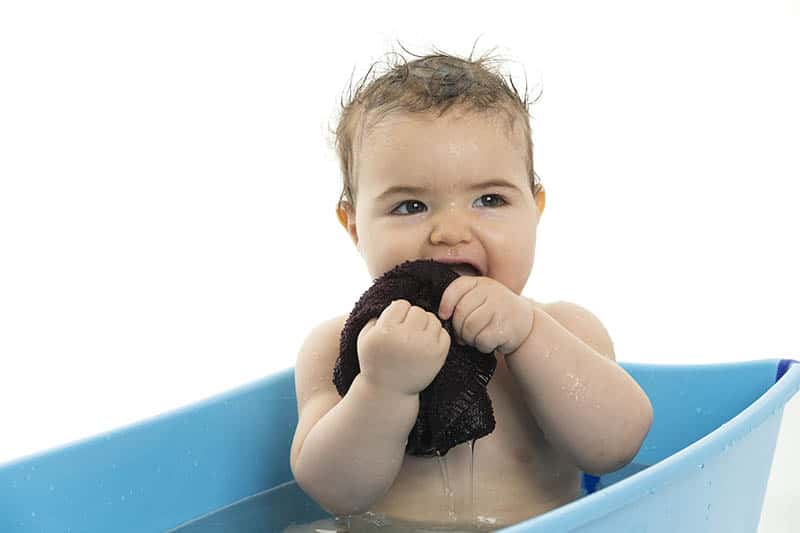
Plus, it’s a natural pain reliever where you can be sure nothing toxic will come in contact with your little one and it works fast, so their very sore gums will feel better right away.
You can try freezing any number of items you think your baby would like to chew on but remember that whatever you choose shouldn’t be too small, otherwise it could be a choking risk.
That’s why I always recommend using a wet baby washcloth, instead of smaller items such as pieces of vegetables or fruit.
Simply soak a washcloth in some water and put it in the freezer until it’s solid enough to chew on, but not frozen solid (around a half-hour will do).
Gently bring it to your baby’s mouth and press it to their gums, or give it to your baby to chew on like a teether.
If your little one doesn’t respond well to a washcloth, try putting a spoon in the fridge and then gently pressing and massaging the gums – this should bring some temporary relief and calm your baby down.
2. Teething toys
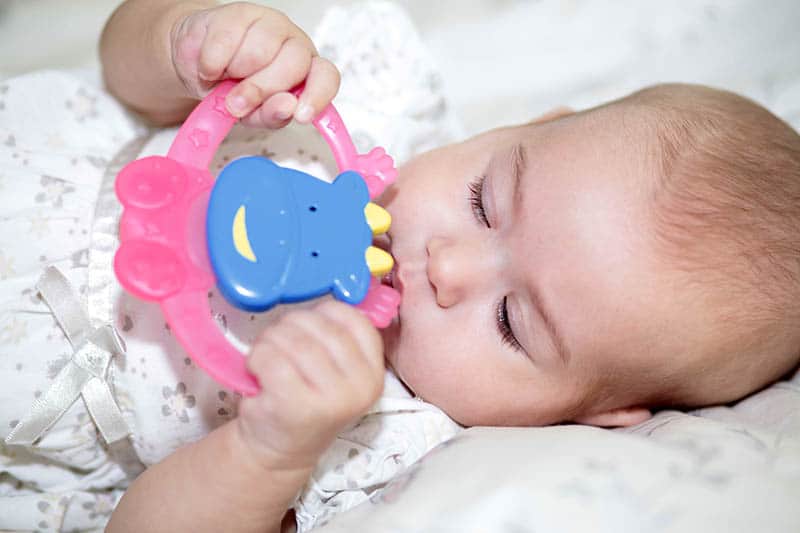
A teething ring is a very popular choice as it’s easy for babies to hold and for parents to clean, especially if it’s made from silicone.
In addition to being soft and chewable, silicone teething rings often come with textured or bumpy surfaces that provide some relief to the baby’s gums when they gnaw on them.
I also think they are a great choice because you can clean them in a sterilizer (or boil them in water), so you can be 100 percent certain that the toy is as safe as possible.
You will also find toys made from rubber that are just as effective and easy to clean – your choice really comes down to which toy you think your baby will love best.
One of my personal favorites are the toothbrush-shaped teething toys that come with gentle bristles.
These are not just great for helping a teething baby deal with achy gums but can get them used to the whole concept of a toothbrush very early on and help develop good teeth-brushing habits.
The NUK massage brush is another excellent option as it’s multi-purpose and helpful when those back teeth start coming in.
Of course, before purchasing any toy, make sure that it’s BPA-free as this chemical should be avoided in all baby products.
RELATED: Best Teethers: 13 Best Buys For Your Baby
3. Chamomile tea
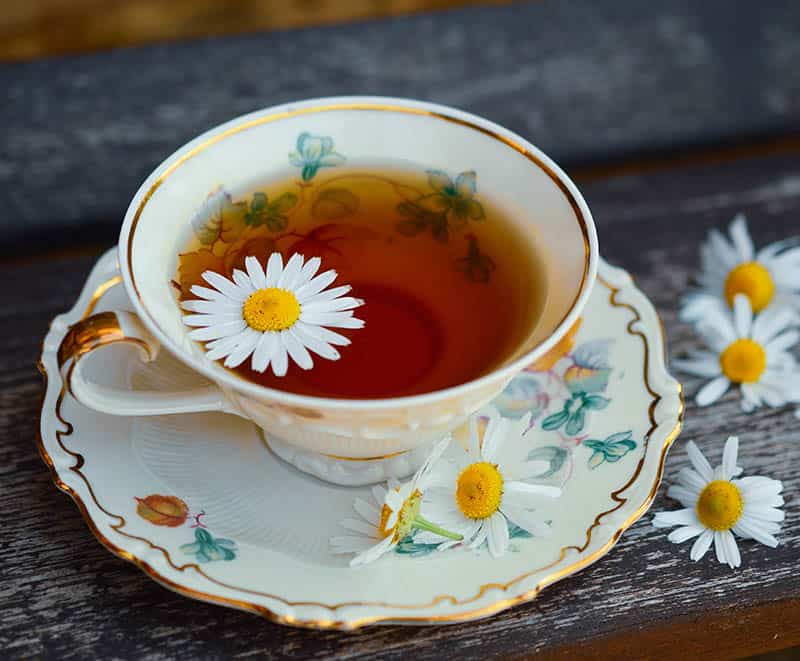
One of the best homeopathic remedies for teething pain is chamomile, which has natural soothing properties.
For example, it is able to reduce the inflammation of the baby’s gums.
But chamomile is also known for its mild sedative effects, so it will help your little one relax and go to sleep, and not be kept up all night by the pain.
When it comes to giving chamomile tea to your little one, it’s important to first make sure the tea doesn’t contain any caffeine.
Once you’ve double-checked all the ingredients, you can try any of the following methods:
- Give your hands a good wash, dip a clean finger into the lukewarm tea, and use it to rub the gums;
- Follow the instructions for the wet washcloth above, but instead of soaking it in water, soak it in chamomile tea and let your baby chew on it;
- Give your baby a few sips;
- Make a few chamomile popsicles and feed them to your baby;
- Freeze the tea into cubes, place them into a mesh feeder, and give it to the baby to chew on. The mesh feeder acts as a safe barrier between the cubes and your baby’s mouth, so there’s no risk of choking.
4. Tylenol (acetaminophen)
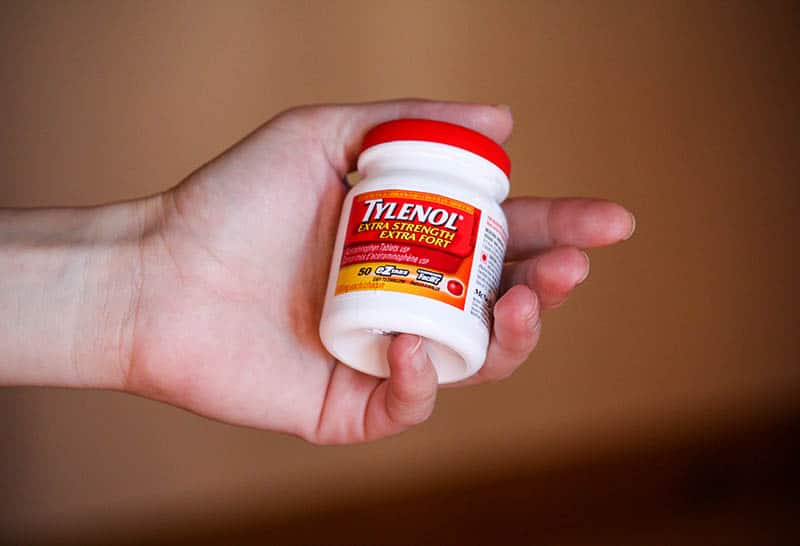
While Tylenol definitely doesn’t belong in the category of natural teething remedies, it should be addressed as a treatment because many parents are recommended to try Infant Tylenol to help their baby with symptoms of teething.
Acetaminophen, the active ingredient found in Tylenol, can provide baby teething pain relief, as well as reduce fever, which is a common teething symptom.
As it’s a very popular over-the-counter medication for both kids and adults, it’s important to know when and how you should give it your little one.
According to the American Academy of Pediatrics (AAP), Tylenol should not be given as a teething remedy under 3 months of age unless you have consulted with your pediatrician and agreed on a dose.
But even if your baby is older than 3 months, finding the correct dose is of key importance, so consulting with a doctor after the 3-month mark is not a bad idea, either.
Ibuprofen, another common pain relief medication, is only safe for babies who are older than 6 months, according to the AAP.
If your baby boy or girl is already taking other kinds of medication, then consulting with your doctor before introducing another pain reliever is a must as there is always a chance that the two medications could lead to serious side effects.
In any case, pain relief medication should only be explored as an option after you have tried all other teething remedies and they have had little to no effect.
5. Breastfeeding

So, if you’re still nursing by the time your baby’s teeth start coming in, you can offer to comfort nurse when you notice that your boy or girl is getting particularly cranky.
You might even find that your little one is breastfeeding more than usual while teething, and this is normal as well.
However, the presence of brand new front teeth can lead to discomfort, such as the baby biting your nipple, so be prepared to make some changes to your feeding positions to adapt to the baby teeth.
6. Pacifier
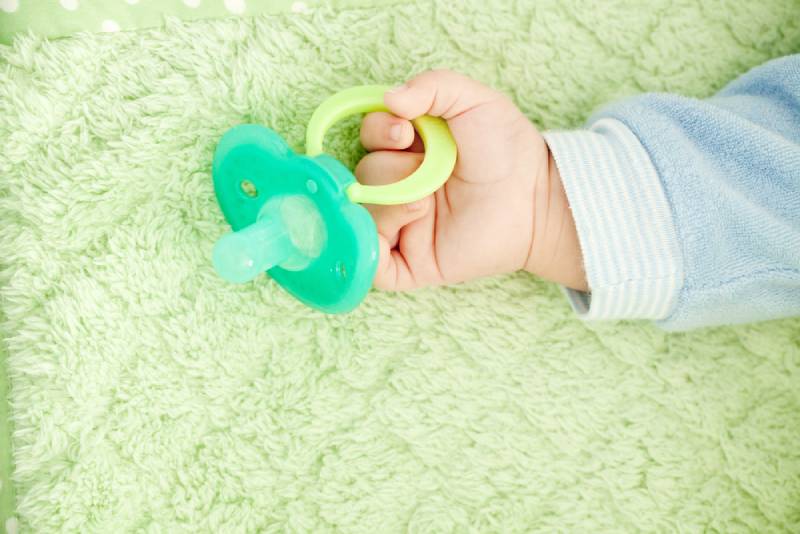
Dip it in some water and put it in the fridge or freezer, and the cold rubber or silicone will bring some instant relief to your little one.
This is an especially great strategy to try out when the front teeth are growing in!
RELATED: Best Pacifiers For Breastfed Babies: 8 Top Choices
7. Fruit

To minimize the risk of choking, place the frozen fruit (pureed, mashed, or cut up) into a mesh feeder.
This will also introduce your baby to the world of eating solid foods on their own, so I definitely recommend trying it out!
What about amber teething necklaces?
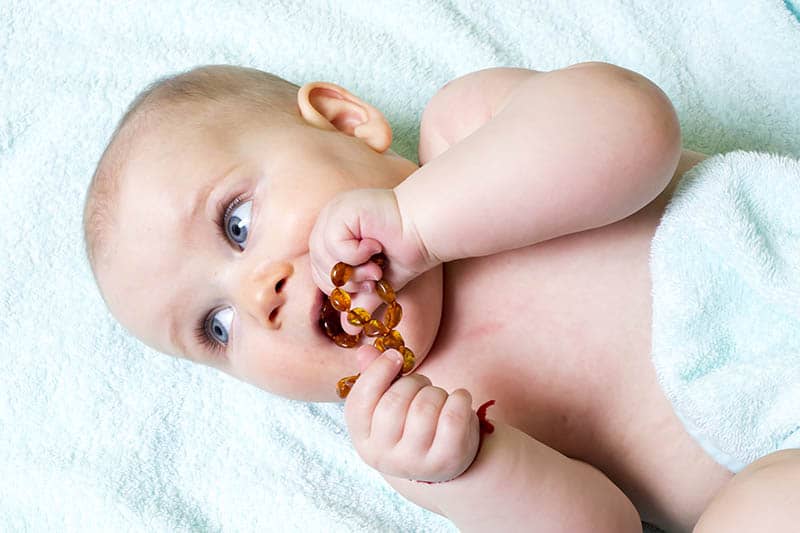
While there are parents who believe it helps their kids, the AAP, on the other hand, warns against using them for a very simple reason.
Necklaces, with beads or not, pose a strangulation risk to babies, not to mention that individual beads can become a choking hazard if they break off.
These necklaces are made from Baltic amber, which allegedly provides pain relief as it has anti-inflammatory properties.
At the same time, scientists still haven’t been able to prove that it works, so evidence is missing regarding its efficacy.
Of course, we can’t ignore the fact that there are moms and dads everywhere who believe it’s one of the best teething remedies, so if you do decide to get one as a last resort, make sure your baby doesn’t wear it while sleeping.
Also, there is the danger of the necklace getting caught on something (like furniture) during the day, which is why extra supervision even when the baby is not sleeping is very important.
A note on teething gels and teething tablets

After you factor in the stress caused by a baby’s fussiness, you get parents who are eager to try anything and everything to help their baby feel better.
Among these remedies, though, there are some that can be quite dangerous – teething tablets being one of them.
Most of these brands contain ingredients that can relieve pain and help babies sleep but it’s tricky to know what exactly is in them.
Because these tablets are considered to be supplements, they are not as tightly regulated by the U.S. Food and Drug Administration (FDA).
For comparison’s sake, drugs that treat serious illnesses such as cancer undergo rigorous testing and clinical trials so that their effectiveness is proven.
After conducting an analysis of teething tablets, the FDA discovered that some contained belladonna (also known as deadly nightshade), an ingredient that can be very dangerous for children.
What’s more, their analysis found the amount of ingredients in some tablets did not match the amount that was shown on the label, meaning that you can’t be sure just how much of a particular supplement your baby is ingesting.
While there are certainly many children who have taken these tablets and felt fine, there are numerous cases where babies have had to be taken to the ER with serious health complications.
Teething gels also used to be a very popular remedy until scientists discovered that many of their ingredients were extremely toxic for kids.
One of these is called benzocaine, which is an anesthetic that the FDA has labeled as unsafe for use by babies under the age of 2.
Another dangerous ingredient is called lidocaine, which should never be used by kids no matter how old they are.
In addition to gels containing dangerous anesthetics, some, which are labeled as homeopathic or natural, should equally be avoided.
While you might think they are safer to use because they are “natural”, most contain the very ingredients that are found in teething tablets (like belladonna) and pose a risk to your baby.
To wrap up
For every mom who barely notices that her baby’s teeth are coming in, there’s a mom that feels it every step of the way and suffers endless sleepless nights trying to calm her baby with all sorts of teething remedies.
Luckily, home remedies for babies that are teething don’t require a lot of special preparation or money – you likely have all the ingredients in your kitchen already, it’s all a matter of trial and error.
Ultimately, what helps for teething will depend on your baby, so don’t give up if one remedy doesn’t work.
And remember, this is just another milestone of your munchkin’s life and it won’t last forever!
References:
- American Academy of Pediatrics. 2017, April 20. “Acetaminophen Dosage Table for Fever and Pain”. Healthy Children.
- American Academy of Pediatrics. 2016, May 23. “Ibuprofen Dosage Table for Fever and Pain”. Healthy Children.
- American Academy of Pediatrics. 2018, December 20. “Teething Necklaces and Beads: A Caution for Parents”. Healthy Children.
- U.S. Food and Drug Administration. 2019, November 4. “FDA warns consumers about homeopathic teething products”. U.S. Food and Drug Administration.
- U.S. Food and Drug Administration. 2018, June 25. “Safety Information on Benzocaine-Containing Products”. U.S. Food and Drug Administration.
Like this post? Please share or pin it for later. You can also stay in the loop and follow us on Facebook, Instagram or Pinterest.
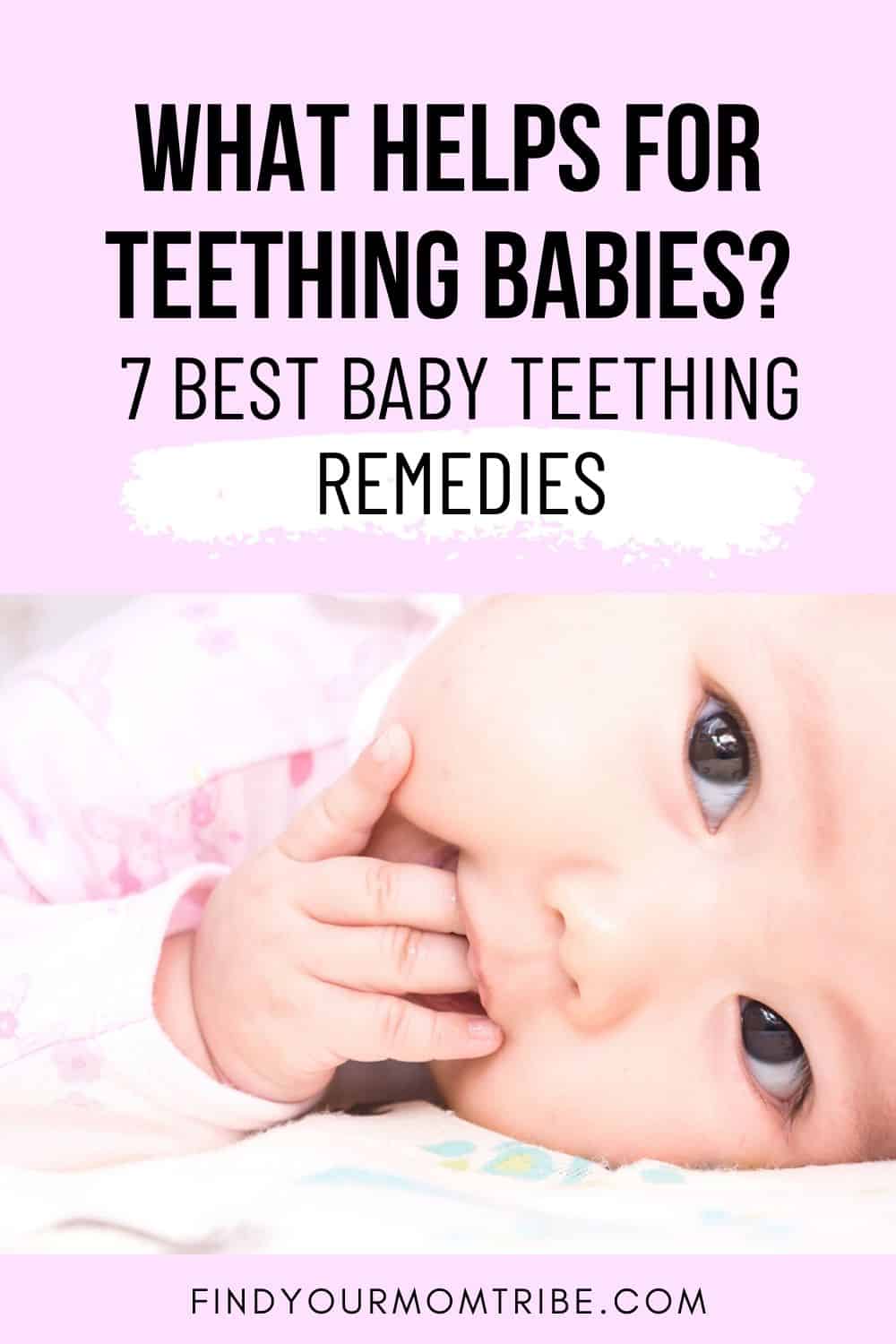
This post contains affiliate links. Please see our full disclosure for more info.

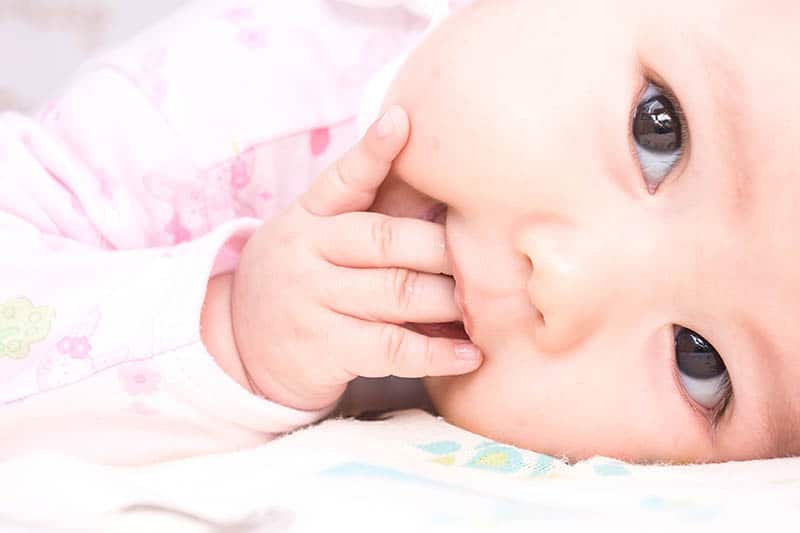
How To Stop Baby Chewing On Crib ? - PREGNANTS
Sunday 4th of December 2022
[…] They’re regarded as one of the most effective solutions to teething problems. […]